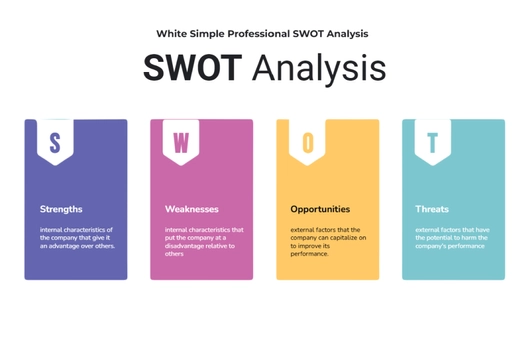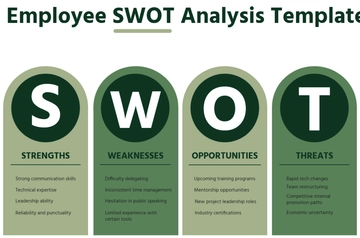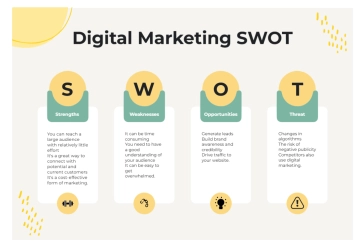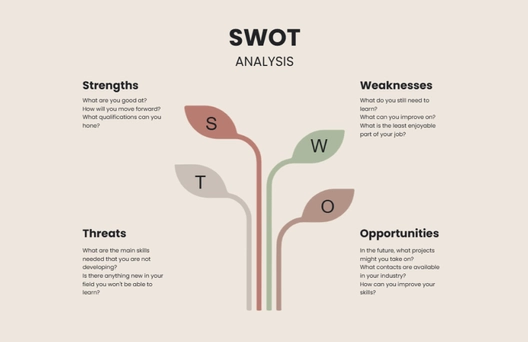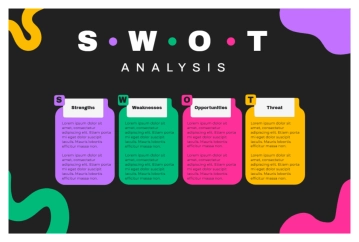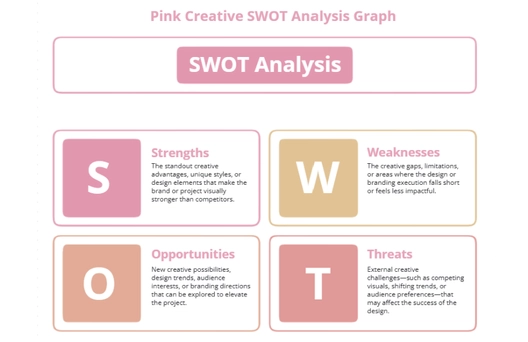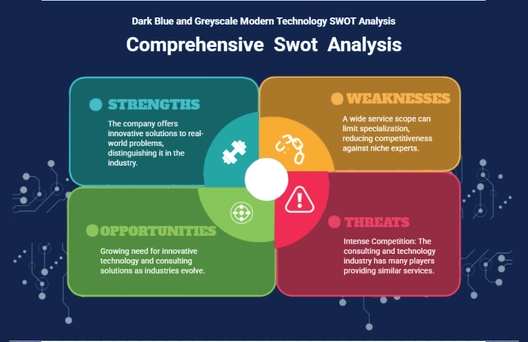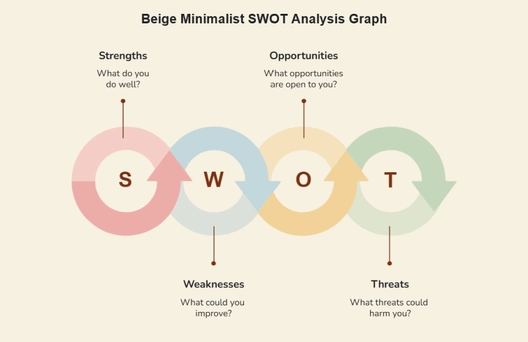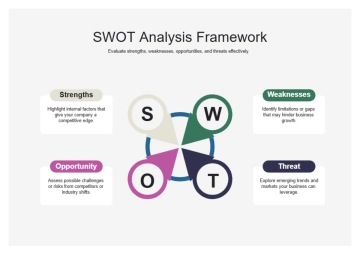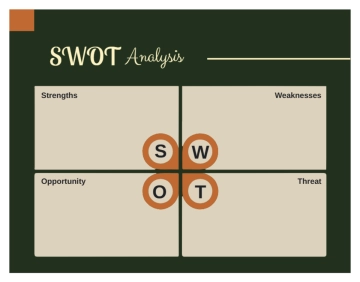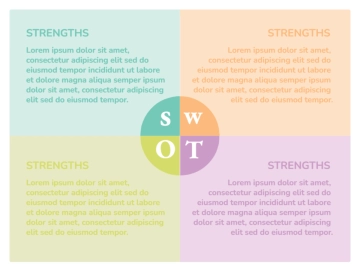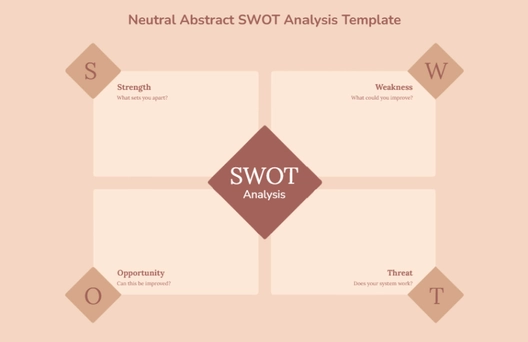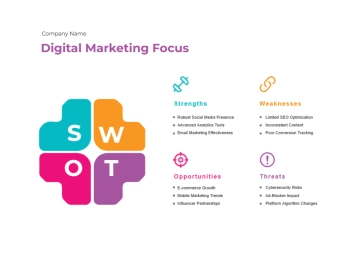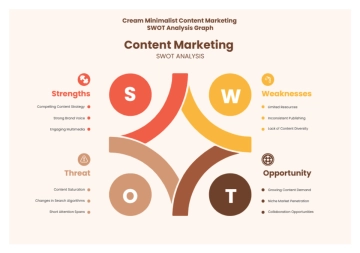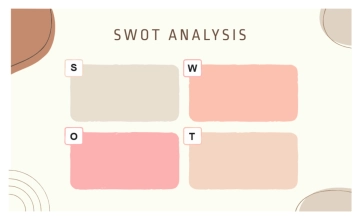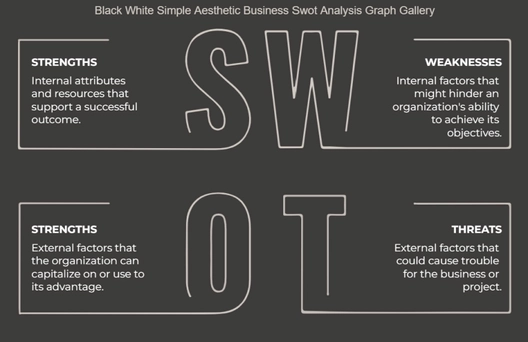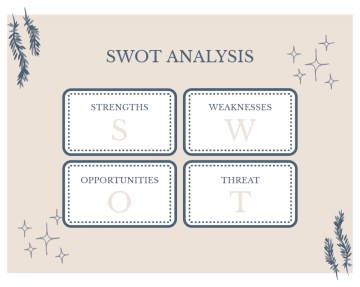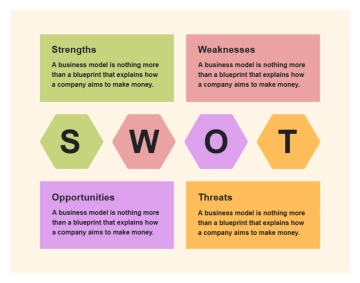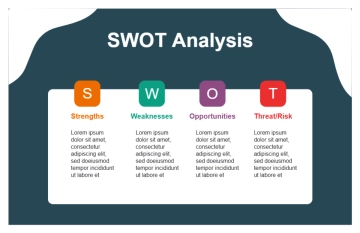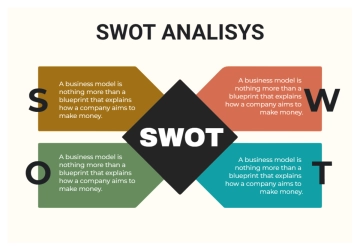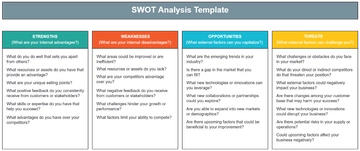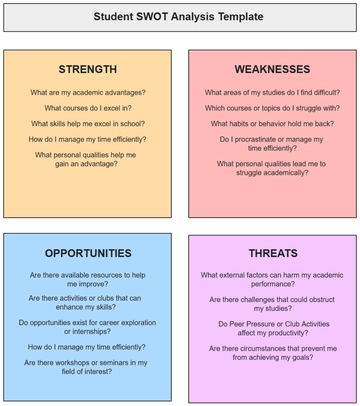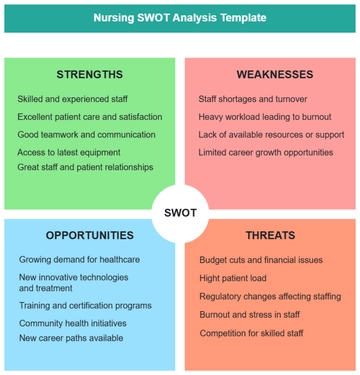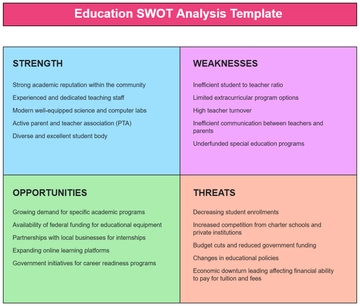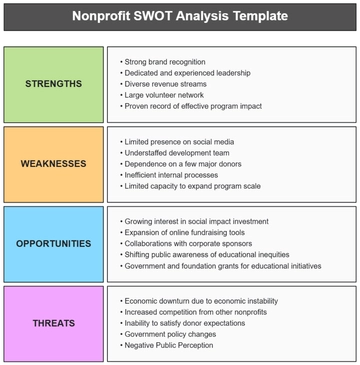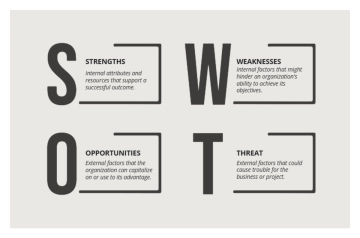Free Recruitment SWOT Analysis HR

Table of Contents
I. Executive Summary............................................................. 3
II. Introduction......................................................................... 5
III. Strengths............................................................................ 6
IV. Weaknesses........................................................................ 7
V. Opportunities...................................................................... 9
VI. Threats............................................................................. 11
VII. Recommendations and Action Plan............................... 12
VIII. Conclusion.................................................................... 15
Executive Summary
The executive summary serves as a concise overview of the HR recruitment process, highlighting key findings and recommendations. It provides a high-level understanding of the SWOT analysis results. In this section, we will present a summary of the HR recruitment process and offer a glimpse of the primary takeaways.
Overview of the HR Recruitment Process:
HR recruitment is a crucial function within any organization, responsible for identifying, attracting, and selecting the best-fit candidates to fill job vacancies. The process typically includes the following stages:
Needs Analysis 🢃 Sourcing 🢃 Screening and Selection 🢃 Offer and Acceptance 🢃 Onboarding |
Key Findings
A strong employer brand has contributed to a positive reputation, attracting top talent. Our recruiters possess experience and understanding of our company culture. Streamlined selection processes have improved efficiency. Employee referrals have been a reliable source of quality candidates.
|
Recommendations
Continue to invest in and promote the employer brand. Provide ongoing training and development opportunities for recruiters. Maintain efficient selection processes. Encourage and incentivize employee referrals. Address Weaknesses Implement strategies to reduce time-to-fill, such as process optimization. Conduct comprehensive turnover analysis and develop retention programs. Allocate additional resources to HR recruitment where needed. Enhance job descriptions to accurately reflect job requirements. Prioritize diversity and inclusion initiatives.
|
II. Introduction
A SWOT analysis in HR recruitment is essential for assessing the internal and external factors that influence our talent acquisition efforts. It provides valuable insights into strengths, weaknesses, opportunities, and threats, guiding strategic decisions. By conducting this analysis, we aim to enhance the effectiveness and efficiency of our recruitment processes, ensuring alignment with organizational goals, legal standards, and industry best practices.
Scope and Objectives of the Analysis
The SWOT analysis in HR recruitment will focus on evaluating the various dimensions of our talent acquisition strategy. Below is a tabular representation of the scope and objectives:
Aspect of HR Recruitment | Scope | Objectives |
Internal Strengths | Assess the strengths within our recruitment processes and HR team. | Identify areas where these strengths can be leveraged to enhance recruitment effectiveness. |
Internal Weaknesses | Examine internal challenges affecting talent acquisition. | Develop actionable strategies to address and overcome these weaknesses. |
External Opportunities | Explore external factors that can positively impact recruitment. | Identify avenues for tapping into opportunities in the talent market. |
External Threats | Analyze external factors posing risks to our recruitment efforts. | Develop contingency plans and mitigation strategies for potential threats. |
III. Strengths
Internal Factors
Strength | Description | Examples/Statistics |
Strong Employer Brand | Our organization maintains a strong and positive employer brand. It reflects our commitment to employee well-being and development. | Employee testimonials on social media Awards and recognitions Community engagement |
Effective Sourcing Methods |
We employ diverse channels and strategies to find qualified candidates. | Online job boards Social media recruiting Employee referrals Networking events |
Experienced Recruiters | Our HR team possesses extensive knowledge of company culture and hiring needs. Professional development programs are available for HR staff. | Recruiters' experience and tenure Ongoing professional development |
Efficient Selection Processes |
Streamlined selection procedures contribute to quicker hiring decisions. | Structured interviews Use of technology (ATS) Data-driven decision-making |
Employee Referrals |
The employee referral program is a strong source of quality candidates. | High participation rate Quality hires Incentive programs |
IV. Weaknesses
Internal Factors
Weakness | Description | Consequences | Remedies |
Slow Time-to-Fill | Delays in filling job vacancies can result from lengthy selection processes, bureaucratic approval procedures, and unavailability of candidates. | Reduced productivity, overburdened teams, and potential loss of top talent.
| 1. Streamline approval processes to expedite hiring.
2. Adopt technology solutions like applicant tracking systems (ATS).
3. Establish clear communication channels between HR and hiring managers. |
High Turnover Rates | Indicates potential issues in talent acquisition and retention. | Disruption of team dynamics and increased recruitment costs. | 1. Implement mentorship programs and career development plans.
2. Conduct exit interviews to understand and address underlying issues.
3. Develop a robust employee recognition and rewards program. |
Limited Resources | Can hinder recruitment efforts. | Inability to compete for top talent and slower hiring processes. | 1. Prioritize recruitment needs within budget constraints.
2. Explore cost-effective technology solutions and leverage free or low-cost job posting platforms.
3. Assess staffing requirements and consider temporary or contract HR support during peak hiring periods. |
Ineffective Job Descriptions | Can deter suitable candidates. | Attracting candidates with the wrong qualifications or cultural fit. | 1. Revise job descriptions to be clear, specific, and inclusive.
2. Emphasize key responsibilities, qualifications, and the company's commitment to diversity.
3. Involve hiring managers and employees in the job description creation process to ensure accuracy and relevance. |
Lack of Diversity
| A homogeneous workforce can hinder innovation and inclusion. | Reduced creativity and inclusivity, and potential legal challenges. | 1. Implement diversity recruitment initiatives, including outreach to diverse communities and organizations.
2. Provide diversity and inclusion training programs for HR and hiring managers.
3. Evaluate and update policies and practices to ensure inclusivity, including bias-free hiring processes and equal opportunities for all candidates. |
V. Opportunities
External Factors
Opportunity | Description | How to Tap into These Opportunities Effectively |
Emerging Talent Pools |
Discuss Shifts:
Understand shifts in workforce demographics and preferences. | 1. Collaborate with universities and educational institutions to establish internship programs and early talent pipelines.
2. Actively participate in industry-specific online communities and forums.
3. Leverage specialized job boards and social media groups to connect with niche talent. |
Technological Advancements |
Highlight HR Technologies:
Embrace advanced HR technologies to streamline recruitment processes. | 1. Invest in AI-driven applicant tracking systems (ATS) to automate resume screening and candidate sourcing.
2. Explore chatbots and virtual assistants for candidate engagement and FAQs.
3. Implement data analytics tools for predictive hiring and performance assessment. |
Market Demand for Specific Skills |
Analyze Market Trends:
Assess market trends and skill gaps within the organization. | 1. Collaborate with industry associations and trade groups to stay updated on skill demand.
2. Conduct regular skills assessments among current employees.
3. Develop upskilling and reskilling programs to bridge skill gaps and align with market demand. |
Networking Events and Job Fairs |
Explore Opportunities:
Engage with potential candidates face-to-face through networking events. | 1. Participate in industry-specific job fairs and conferences.
2. Host and sponsor networking events, workshops, and seminars to connect with both active and passive candidates.
3. Leverage alumni networks and professional associations for candidate referrals. |
Changes in the Labor Market |
Discuss Shifts:
Understand shifts in workforce demographics and preferences. | 1. Analyze labor market reports and demographic data to identify emerging workforce trends.
2. Adapt recruitment strategies to accommodate flexible work arrangements and remote work preferences.
3. Implement targeted employer branding campaigns to attract diverse talent. |
VI. Threats
External Factors
Threat | Description | Contingency Plans and Mitigation Strategies |
Economic Downturns | Evaluate Economic Impact:
Assess how economic downturns may affect HR budgets and intensify competition for talent. | Contingency Plans:
1. Develop a flexible budget that allows for adjustments during economic fluctuations.
2. Focus on retaining top talent through competitive compensation and benefits.
3. Foster relationships with local educational institutions to access potential talent during downturns.
|
Talent Shortage | Challenges in Finding Candidates:
Discuss difficulties in finding qualified candidates. | Mitigation Strategies:
1. Implement upskilling and reskilling programs to develop existing employees' skills.
2. Collaborate with educational institutions and offer internships and apprenticeships to bridge talent gaps. |
Legal and Regulatory Changes | Address Legal Implications:
Examine employment laws affecting hiring practices. | Compliance Measures:
1. Stay updated on all relevant HR regulations and legal changes.
2. Conduct regular audits of recruitment processes to ensure compliance.
3. Provide training for HR staff on new regulations and best practices. |
Competitive Pressure | Analyze Competitive Landscape:
Understand the competitive landscape in HR recruitment. | Stay Ahead of Rivals:
1. Continuously monitor competitors' strategies and market positioning.
2. Innovate recruitment processes and candidate experiences to stand out.
3. Foster a strong employer brand to attract top talent. |
Negative Employer Reviews | Consequences of Poor Reputation:
Discuss how negative online reviews or a damaged reputation can affect recruitment efforts. | Reputation Management:
1. Monitor online feedback and address negative reviews promptly and professionally.
2. Promote a positive candidate experience to counteract negative perceptions.
3. Encourage satisfied employees to share their positive experiences online. |
VII. Recommendations and Action Plan
Summary of Key Recommendations
Based on the SWOT analysis, the following key recommendations emerge:
Leverage Strengths
Strengthen our employer brand through consistent branding initiatives and invest in ongoing HR staff development. Enhance employee referral programs and maintain efficient selection processes.
Address Weaknesses
Streamline approval processes and adopt technology solutions to reduce time-to-fill. Implement retention strategies to combat high turnover rates. Prioritize resource allocation and improve job descriptions for effective candidate attraction. Promote diversity and inclusion initiatives.
Tap into Opportunities
Establish connections with emerging talent pools, embrace advanced HR technologies, align recruitment with market demand for specific skills, actively engage in networking events, and adapt to changing labor market dynamics.
Mitigate Threats
Develop contingency plans for economic downturns, upskill existing employees to combat talent shortages, ensure compliance with legal changes, stay ahead of competitors in the competitive landscape, and proactively manage the organization's online reputation.
|
Action Plan
The action plan outlines specific steps, responsibilities, and timelines for implementing the recommendations:
Recommendation Area | Action Steps | Responsible Parties | Timeline |
Leveraging Strengths | Enhance branding initiatives. Invest in HR staff development. Improve employee referral programs. Maintain efficient selection processes. |
HR Department and Marketing Team |
Ongoing, with quarterly assessments
|
Addressing Weaknesses | Streamline approval processes and implement technology solutions. Implement retention strategies. Allocate resources effectively. Revise job descriptions. Promote diversity and inclusion. |
HR Leadership and Department Heads |
Quarterly milestones for each strategy
|
Tapping into Opportunities | Establish connections with emerging talent pools. Embrace HR technologies. Align recruitment with market demand. Engage in networking events. Adapt to labor market shifts.
|
HR Recruitment Team and Partnerships |
Ongoing, with specific event-based goals
|
Mitigating Threats | Develop contingency plans for economic downturns. Upskill existing employees. Ensure compliance with legal changes. Stay competitive in the market. Manage online reputation. |
HR Leadership, Training and Legal Teams, Marketing
|
Established timelines for each contingency plan and compliance audit
|
This action plan provides a clear roadmap for implementing the recommendations derived
VIII. Conclusion
Regularly reviewing and adapting HR recruitment strategies is paramount to staying competitive and meeting organizational goals. In the ever-evolving talent landscape, adjustments are vital to leverage strengths, address weaknesses, seize opportunities, and mitigate threats effectively. Ongoing monitoring and assessment enable us to fine-tune our approaches, ensuring they align with US HR legal standards while fostering an inclusive, efficient, and responsive recruitment environment that attracts and retains top talent. In this dynamic field, continuous improvement is not just a choice; it's a necessity for success.
- 100% Customizable, free editor
- Access 1 Million+ Templates, photo’s & graphics
- Download or share as a template
- Click and replace photos, graphics, text, backgrounds
- Resize, crop, AI write & more
- Access advanced editor
Discover unparalleled HR insights with the Recruitment SWOT Analysis HR Template from Template.net. This editable and customizable template, exclusively available on Template.net, empowers you to perform a comprehensive analysis effortlessly. Tailor your strengths, weaknesses, opportunities, and threats seamlessly with our intuitive Ai Editor Tool, ensuring a strategic and personalized approach to recruitment.
